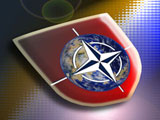Afghanistan: Rethinking NATO's approach
By Veronica Gravning for ISN
Given its difficulties in Afghanistan, NATO has put increasing emphasis on a comprehensive civil-military approach to crisis management. In the context of marginal success, according to NATO Secretary-General Jaap de Hoop Scheffer, a external page comprehensive approach to crisis management is considered the only option. However, in view of its predominantly military identity, the implementation of such an objective is wrought with formidable challenges.
A comprehensive approach for NATO is one that external page promotes "cooperation and coordination between international organizations, individual agencies and NGOs as well as with the host government." The approach asks for more than an ad hoc and bottom up process of coordination; instead a "structured and effective coordination at the local, national and institutional level" is needed.
NATO has spoken of such a framework since 2006, but has recently re-established its commitment to the process. At the Bucharest summit in April this year, NATO endorsed an action plan to make a comprehensive approach operational. Pragmatic proposals have been made, yet nothing will be implemented before the proposals are voted upon and accepted.
As limitation to the concept itself, NATO states clearly it can only contribute to an overall comprehensive approach put forward by the international community at large.
NATO has offered this solution because other international organizations and national governments have discussed similar transformations. The UN has spoken of integrated missions since 2000, while the EU has put forward its concept of civil military coordination. NATO's comprehensive approach follows a similar suit.
With the large number of international actors in theater, an international organization such as NATO is committed to organizational survival. So if the name of the game in 2008 is crisis management transformation consisting of UN-integrated missions and EU civil-military coordination, then NATO has to ride the wave in order to remain in the loop. If not, it is in danger of becoming redundant.
Some claim that Afghanistan is NATO's ultimate test within the international community - a test to demonstrate whether the alliance is capable of surviving (at least in its current form) in this post-Cold War era.
The old security paradigm where threats were measured in traditional geographical terms has been swapped with an engagement paradigm by which NATO has identified threats to international security on a global scale.
Afghanistan puts this paradigm to the test.
Couple this with the realization that numerous international actors speak of a coordinated and coherent approach to crisis management, and perhaps NATO's self-limiting solution is also about sharing the responsibility of success or failure in Afghanistan.
Burden sharing and fear of organizational redundancy are egotistical reasons for a comprehensive approach to Afghanistan. The approach is a means to an end, never an end in itself. In this case, NATO misses the point.
More importantly, NATO's military identity inhibits such a transformation, and this identity crisis poses many challenges. Firstly, a strong military structure will always be weary of accommodating values and a culture dissimilar from its own.
Second, there is a serious lack of trust between non-military and military actors in the field. The trust issue limits civil-military information sharing. This is most recently documented by a new information-sharing capability "external page Fusion Centre."
The need for impartiality on the part of the civil structures is an impossible challenge for a military alliance. There is a external page documented unwillingness by NGOs and humanitarian actors to work in concert with the military alliance because the local population has difficulties distinguishing between those who are an "occupying force" and those who are there simply to help.
There are two possible roads for NATO: either retain military identity and dismiss the comprehensive approach or change its identity to fit within the confines of civil-military cooperation. Rather than competing with multidimensional originations such as the UN and the EU, NATO should follow the former: focus on what it does best – providing security.
The alliance should establish clear cut responsibilities in the field. Let the local population know that the UN Assistance Mission in Afghanistan is impartial and neutral, and let humanitarian agencies develop a comprehensive approach among themselves under the umbrella of the UN.
Let NATO take on the security dimension. By doing this, it can perhaps make humanitarian agencies more efficient.
There are fundamental problems that a comprehensive approach cannot solve for NATO: national caveats and sovereignty in a multilateral structure; the issue between civilian (NGOs) and military structures and the reluctance to work with the military as NGOs lose their credibility as neutral actors; trust between actors; and organizational survival and hidden agendas. Cultural differences and difference in values and methods can also come into play.
The answer to success in Afghanistan does not lie with NATO's comprehensive approach. Rather let NATO provide security and rely on the UN to provide strucutures for an overall comprehensive approach.
